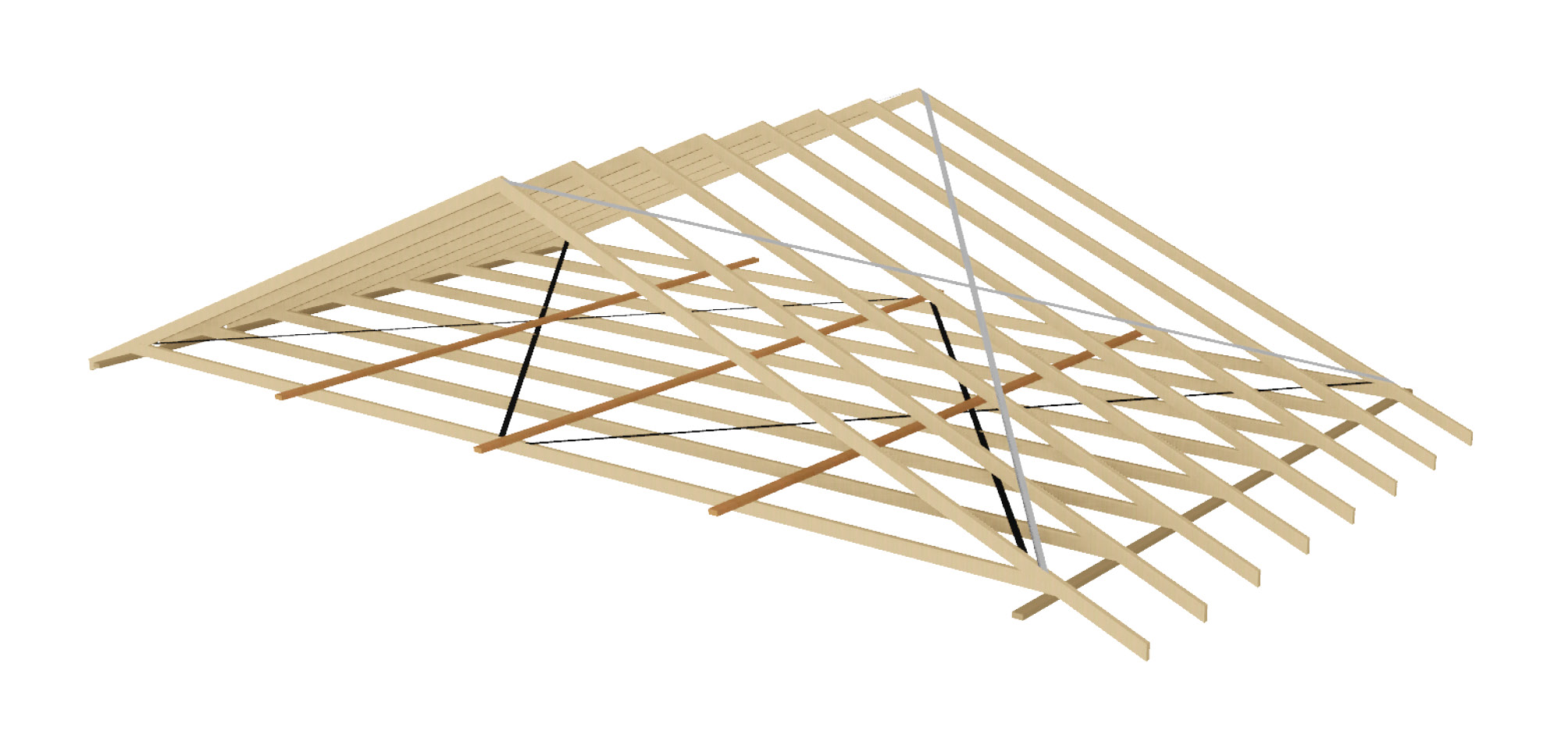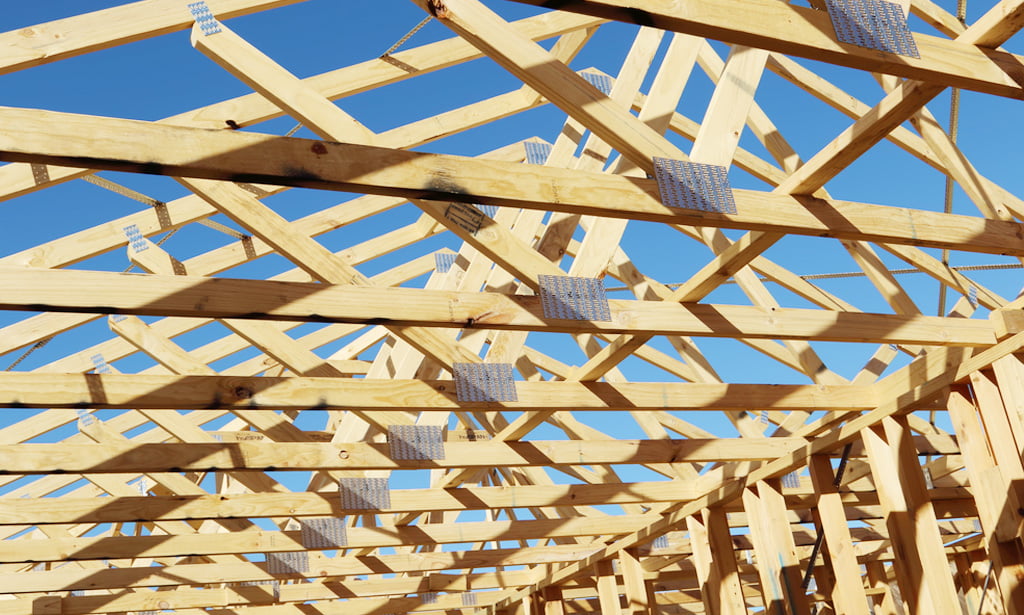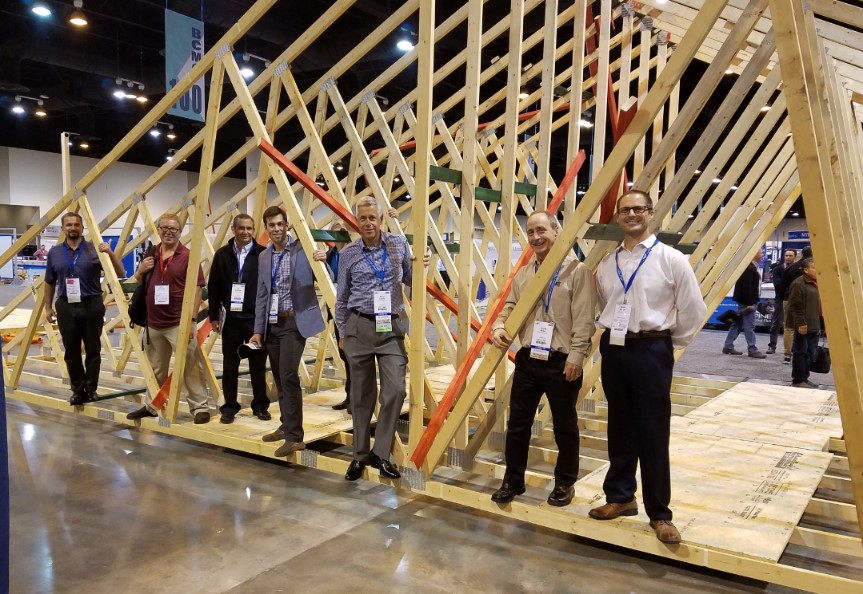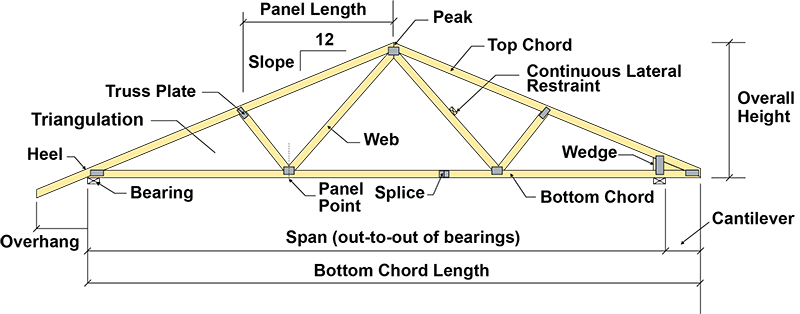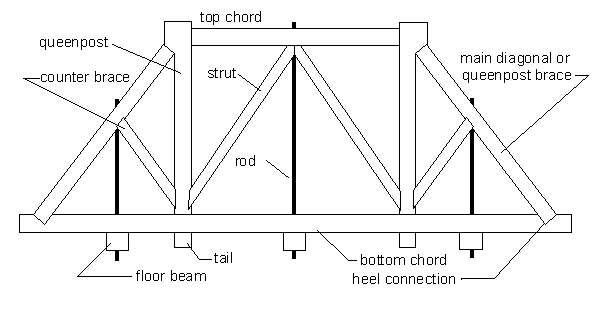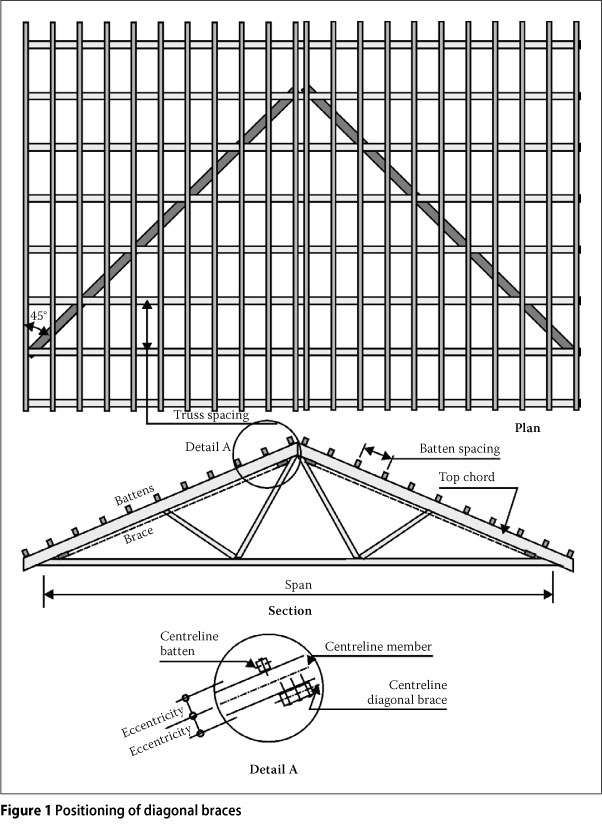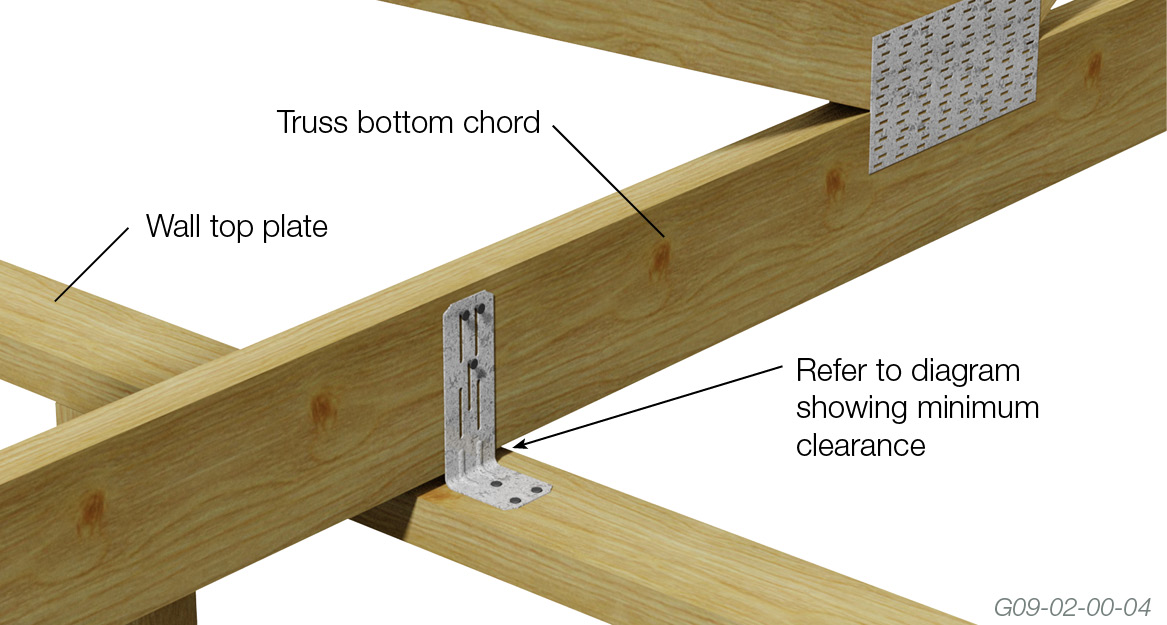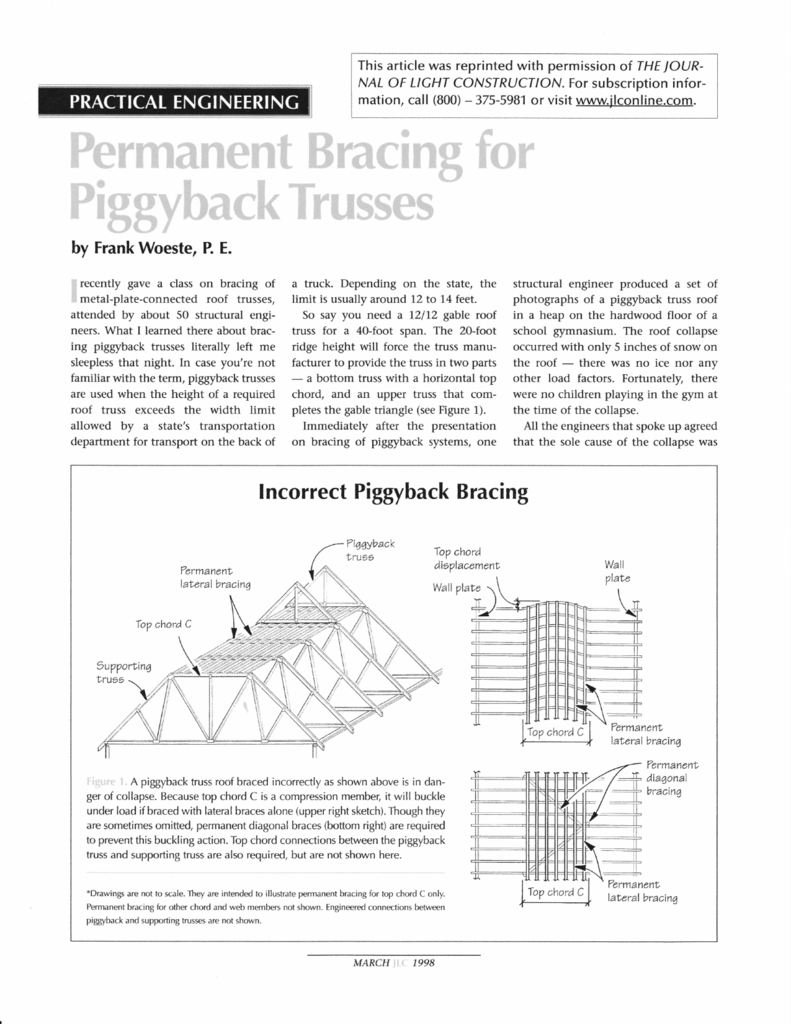Roof Truss No Bottom Chord Bracing

Lifting trusses higher than one story may require a crane.
Roof truss no bottom chord bracing. Bottom chord the member located at the bottom of the wood truss. Section 4 roof bracing 4 1 general 4 2 battens 4 3 top chords 4 4 bottom chords 4 5 webs 4 6 top hat construction section 5 truss connections 5 1 hip ends 5 2 girder 5 3 gable end trusses 5 4 valleys 5 5 overhangs. Nail braces vertically every 4 feet along the top and bottom of a gable truss. This will simultaneously satisfy both temporary and permanent restraint requirements.
Bridging is a restraint between the top chord of one truss to the bottom chord of an adjacent truss. Step 3 brace first truss to ground. Install 2x4s at a 45 degree angle. Section 1 scope and general.
2 minor axis bending of the bottom chord will be resisted to some extent by the struts between the end bay bracing trusses. One truss system was laterally restrained and diagonally braced according to the guidance provided in the bcsi booklet. Lastly the walls themselves can be modified. 1 minor axis bending of the top chord will likely be resisted by the roof purlins which may not be included in your model.
The other truss system had lateral restraint and diagonal bracing within the web member plane only. To stop from buckling truss bottom chords and do not provide lateral stability to the building to resist lateral wind loads. If there is no ceiling directly attached to the bottom chords install rows of tsbr during truss placement at the on center spacing specified on the truss design drawing tdd or by the building designer 10 o c. And using steel as a construction material can help to redirect the tensions through materials more capable of absorbing the load.
Diagonal restraint used at the web plane act as sort of a chevron restraint for the truss system and transfer loads from the web lateral restraint to the roof deck and bottom chord plane. Top chord the member located at the top of the wood truss which forms the shape of the roof. Buildings with suspended ceilings require additional bracing to ensure the lateral stability of the walls. Slide the rest of the truss up using a 2x4 as a ramp if necessary.
The bottom chord ties and bracing are intended only to restrain i e. Turn the truss upside down and place on corner on the roof surface. On the bcmc show floor last week sbca and the national framers council nfc constructed two roof truss systems comprised of five identical 50 foot trusses. The bottom chord ties are not intended to replace the binders required to support the end wall.
Timber roof trusses are engineered and manufactured to. Every truss is still braced in both directions and the load between the second and third pairs of trusses is transferred by the roof diaphragm. Perhaps you need additional struts or fly braces. There are a number of truss styles that do not use a horizontal bottom chord the scissor truss for instance.


